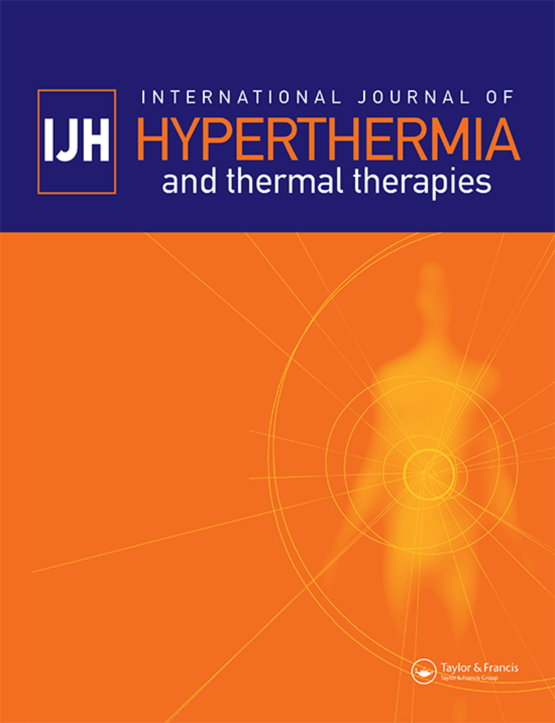Submit a Manuscript to the Journal
International Journal of Hyperthermia
For an Article Collection on
Therapy Ultrasound: Medicine’s Swiss Army Knife?
Manuscript deadline
31 August 2024


Article collection guest advisor(s)
Prof. Mark W. Dewhirst,
Duke University, USA
Prof. Gail ter Haar,
The Institute of Cancer Research, UK
Dr. Jean Francois Aubry,
Physics for Medicine Paris, France
Therapy Ultrasound: Medicine’s Swiss Army Knife?
Ultrasound is, in many ways, the most versatile form of energy used in clinical medicine. Its use (at low powers) for diagnosis is well-known, with most people first encountering it when their babies are scanned in utero. In general, diagnostic ultrasound uses very short pulses and low acoustic pressures. While ultrasound is generally considered a safe technique, especially in obstetrics, with no adverse effects on the tissues being imaged, it is well known that different exposure regimes (longer pulses, higher powers, higher acoustic pressures) can induce biological effects. In therapeutic ultrasound, the aim is to harness these effects for patient benefit.
The field of therapeutic ultrasound is burgeoning. The earliest reports of its potential were published in the first half of the 20th century, with the main interest at that time being its potential to thermally ablate tissue selectively, but with some reports of the ability to alter nerve function. These aspects are still of clinical interest today, with thermal ablation being used, for example, to treat uterine fibroids and essential tremor, and neuromodulation (thought to be non-thermally induced) being explored for the treatment, for example, of depression. The main differences now, in the first quarter of the 21st century, lie in our more sophisticated imaging and treatment delivery techniques. Now added to the therapeutic ultrasound armamentarium are histotripsy (which relies on mechanical, cavitation-induced damage), and the recognition that ultrasound can enhance drug delivery and stimulate the immune system.
This article collection reflects these multifarious uses and actions of ultrasound and contains both review articles and research papers. It provides an important compendium of topics, reflecting the state of the art of this rapidly expanding field. Its purpose is to provide a comprehensive set of papers that envelop the basics of how ultrasound is used, how it is delivered, and its biological effects. This collection, therefore, includes, but is not limited to, papers on:
- Thermal effects
- Thermal biology
- Effects of ultrasound in the brain and other organs
- Histotripsy
- Drug delivery
- Acoustic cavitation
Keywords: ultrasound innovation, therapeutic applications, advanced imaging technique, biological effects
Guest Advisors
Prof. Mark W Dewhirst, DVM., Ph.D. served as the Editor-in-Chief of the International Journal of Hyperthermia for more than 25 years. He has more than 35 years of experience in studying tumor physiology and physiologic metabolic microenvironment as well as conducting clinical trials combining hyperthermia with radiation therapy and chemotherapy for treatment of both human and canine subjects with cancer. He has been able to integrate studies conducted in the laboratory with those used in the clinic to develop a comprehensive understanding of how to optimize combination therapies involving hyperthermia.
Prof. Gail ter Haar, Ph.D. is a physicist who runs the Therapy Ultrasound group at the Institute of Cancer Research in London, UK. Her research interests focus on developing new therapy ultrasound techniques and their translation into the clinic. Her current projects include the use of thermal ablation for the treatment of twin-to-twin transfusion syndrome and the stimulation of the immune response by ultrasound for the treatment of pancreatic cancer and neuroblastoma.
Dr. Jean Francois Aubry, Ph.D. is a director of research at France’s National Center for Scientific Research (CNRS). He works at Physics for Medicine Paris (Paris, France). His main research interests are currently MR-guided transcranial brain therapy for neurologic diseases and Neuronavigated transcranial ultrasound stimulation for psychiatric diseases but he also worked on ultrasonic motion detection and motion correction, high resolution cavitation mapping, and drug delivery. Lab page: https://www.physicsformedicine.espci.fr/aubry-jean-francois/
Disclosure Statement: Prof.Mark W Dewhirst and Prof.Gail ter Haar declare there is no conflict of interest. Dr. Jean Francois Aubry declared that he received grants from companies for research purposes (SuperSonic Imagine, Aix en Provence, France; FUS Mobile, Alpharetta, GA, USA ; Insightec, Tirat Carmel, Israel) and holds stock options of FUS Mobile (Alpharetta, GA, USA).
All manuscripts submitted to this Article Collection will undergo a full peer-review; the Guest Advisor for this Collection will not be handling the manuscripts (unless they are an Editorial Board member).
Please review the journal scope and author submission instructions prior to submitting a manuscript.
The deadline for submitting manuscripts is August 31st, 2024.
Please contact Ruby Ru at [email protected] with any queries and discount codes regarding this Article Collection.
To submit your papers to this Article Collection, please:
- Check "yes" for the question, "Are you submitting your paper for a specific special issue or article collection?"
- Select the relevant Article Collection from the drop-down menu under the question, "Special Issue or Article Collection Name."
Benefits of publishing open access within Taylor & Francis
Global marketing and publicity, ensuring your research reaches the people you want it to.
Article Collections bring together the latest research on hot topics from influential researchers across the globe.
Rigorous peer review for every open access article.
Rapid online publication allowing you to share your work quickly.
Looking to Publish your Research?
Find out how to publish your research open access with Taylor & Francis Group.
Choose open accessSubmission Instructions
All manuscripts submitted to this Article Collection will undergo desk assessment and peer-review as part of our standard editorial process. Guest Advisors for this collection will not be involved in peer-reviewing manuscripts unless they are an existing member of the Editorial Board. Please review the journal Aims and Scope and author submission instructions prior to submitting a manuscript.